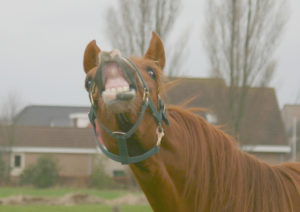This post originally appeared on Speak Well, Read Well.
Last week I had lunch with a friend and her teenage son, Mason. He had a great story about communication. When he was picking up his cousin from school, she came out of her first-grade classroom wearing a large sticker on the front of her shirt. He asked, “What does your sticker say?” She gave him a “look” that seemed to mean, ‘Do you really think I am that gullible?’ then tore off the sticker and said, “It doesn’t say anything, Mason – it’s a sticker.” He wasn’t about to fool her!
I loved that story. So many kids in the early years of elementary school are very literal-minded. Image the confusion when they hear things like: Are your ears burning? Could you lend me a hand? I’m in a pickle.
Is it any wonder there are Common Core Standards to address that issue? If you aren’t familiar with these standards, they were developed to specify what students are expected to learn and teachers expected to teach at each grade level. In kindergarten, teachers use grade-level stories to teach their students to “identify new meanings for familiar words . . .” For example, the word “duck” can mean a feathery kind of animal or the action you take when something comes flying too close to your head. This standard is upgraded slightly as students get older, and they are taught more sophisticated multi-meaning words and idioms as they progress through their school years.
In speech, I often get to work on this standard with students who have language delays. I’m always on the lookout for books that will make it fun, so I was thrilled to find Ted Arnold’s three books, Parts, More Parts, and Even More Parts. They are full of idioms and hilarious illustrations to match the phrases. In the last book, my students cracked up over the pictures accompanying the phrase, “It cost an arm and a leg.” A child is pictured in a store with his detached arm and leg on the counter, ready to make his purchase. The cash register is open and full of appendages. At the bottom of the page there is an illustration of a child saying, “I had to pay through the nose.” I won’t go into the details of that one but I’m sure you can picture it on your own. Then there is the boy who said, “I lost my head.” He’s wandering around headless with arms outstretched in search of his missing body part. There are clever depictions throughout the book that kept my students in stitches.
Now, let’s get down to brass tacks. Don’t you think Mason went the extra mileby giving his cousin a ride home from school? I have a gut feeling – the sky’s the limit for this guy.
Jeanette W. Stickel is a licensed and speech-language pathologist who has worked in this field for over thirty years. She is also a member of the Society of Children’s Book Writers and Illustrators and writes stories for children.
Be sure to comment on my Carry Over and Out post for a chance to win a free iPad app! You have until midnight (EST) tonight and two winners will be announced tomorrow.






